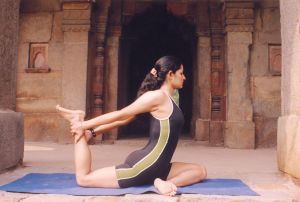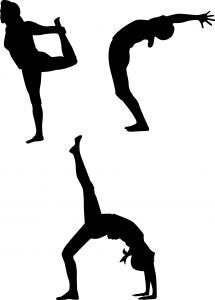Fitness & Function
Anyone can get back in shape with a little work


If you would like to know the answers to those questions or you can substitute “Why do I” instead of “Why do some people” in the above sentences, then you need to visit us and find out.
We take an East West approach to fitness that goes beyond the regular methods of rehabilitation and fitness. Did you know:
- Most people’s pain is caused by structural misalignment–this leads to altered gait, poor performance, and stress on tissue
- Structural misalignment leads to wearing down of joints and using the joints inefficiently
- Inefficient movement patterns not only wear the body down but use more energy and can lead to fatigue
- Muscle imbalance is one of the major causes of structural misalignment–muscle imbalance can be caused by poor training techniques
- If you are in pain or suffering biomechanical dysfunction, you can not meet your fitness goals
- You can do something about it
Regardless of what age you are and what fitness level you are at, you need a balanced body that functions structurally and biomechanical as it should. Here’s what we can offer you:
- 1. We balance the body through structural alignment techniques: muscle energy technique, myofascial release, and neuromuscular therapy
- We teach you how to stretch the muscles that are too tight and strengthen the muscles that are weaker
- We help you build energy by showing you Eastern techniques of increasing energy
- We’ll introduce you to foods and herbs that build super health and performance
- You can continue your workouts, go to the gym, or use your favorite personal trainer–you’ll just be better educated about your body, your muscles, and how to use them
If you are an athlete who has pain or trains in pain, this program is for you.
If you are a middle-aged or elder who wants to exercise but has pain or physical limitations that keep you from exercising like you want, this program is for you.
Even if you are a good athlete and everything “works,” we still may be able to help you increase performance.
We’ve worked on professional athletes and weekend warriors. We even work on teenagers–dance injuries, track injuries, flexibility issues–you name it.
Syndromes–we work on them–if you have balance problems, “hamstring syndrome,” “piriformis syndrome,” “rotator cuff,” “plantar fasciitis,” “bulging discs,”–and others.
You’ll feel better

Besides the therapies described above we use:
- Basic Stretching and Strengthening
- Active Isolated Stretching and Strengthening (Mattes Method)
- Energy Exercises:
- Chi Kung and Tai Chi
- Pranayama (Yogic Breathing)
- Somatics
- Select Yoga Postures
- Posture Education
Over the years we worked on so many people who were not getting out of pain with going to the gym, going to the physical therapist, using regular fitness methods, doing Pilates, etc. (All these things have their places). We even took a personal training certification so we could understand the common ways most trainers and therapists look at rehabilitation and fitness.
What was and is missing in most training programs is the concept of body balancing. Here’s three examples:
Patient #1: Golfer in his mid-sixties who has back and hip pain while playing golf and low back pain in general. He works out at gym almost daily. He uses inversion table for spinal traction and receives stretching (PNF) from personal trainers at gym. Nothing helps his pain. After several visits his pain is reduced by balancing his body through muscle energy treatments, myofascial release, and neuromuscular therapy. We teach him appropriate stretching and how to strengthen without causing pain. We address activities of daily living that contribute to imbalances. We introduce him to wellness concepts beyond “working out.”
Patient #2: Runner in her early forties who experiences pain in hip and hamstring after running three miles. After balancing her pelvis by releasing the deep hip rotators, she no longer has pain while running.
Patient #3: Hiker and outdoors enthusiast in his late forties has had knee replacement, still has pain in knee, is unable to do what he loves, and is told he is headed towards another surgery. After balancing the pelvis, aligning the thigh and knee, and releasing hypertonic back muscles, his pain diminishes 90%, and patient is able to do extensive hiking and rock climbing. In addition he is able to train by climbing stairs and walking up hills.
